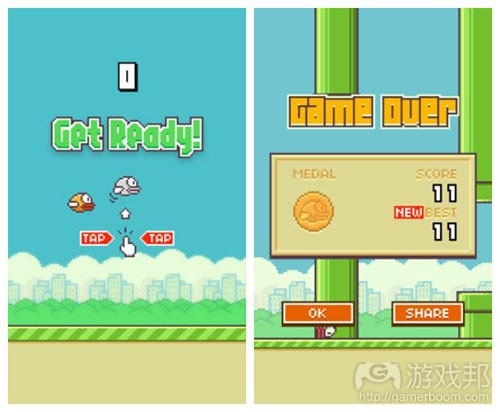开发者应该掌握的三个发行步骤
作者:Chris Hulls
这是大多数开发者在发行一款全新应用时都会遇到的最大问题之一:“如果我创造了它,是否会有人喜欢它?”即使你的产品很出色,如果你不能吸引最初的用户的注意,你便算失败。讽刺的是,虽然这是我们需要克服的早期问题之一,但大多数企业家却正是在此跌跟头。这种情况并不是随时都会发生。拥有一些基本的应用商店知识的话,你便可以避免大多数手机初创企业可能会犯下的错误并通过自己的方法获得足够的用户,如此你的成功将会取决于你的产品的质量—-而非我在此呈现的市场营销技巧。
步骤1:了解你自己
应用创造者在发行时遭遇失败的第一个原因便是选择了错误的策略。并不存在任何完全的游戏计划,因为有些适合《Flappy Bird》的方法并不一定适合你的游戏。人们会掉进这一陷阱是因为他们不了解应用生态系统,其实这真的再明确不过。在分销环境下,我们拥有主要的3种应用策略(不管是免费应用还是付费应用):实用性,游戏和娱乐,以及社交。每个策略都具有不同的获取机制,而了解这些不同点特别重要。以下表格便呈现了每种不同策略所存在的区别(游戏邦注:需要注意的是像《Words With Friends》这样的社交游戏属于社交类别)。
步骤2:了解应用检索
为了更好地理解这点,你应该想想人们是如何发现应用:实用性。如果某些人需要某些东西去解决已知的问题,就像一款手电筒应用或家人定位器,他们便会主动去搜索。所以实用性的创造者需要围绕着适当的关键词进行优化,因为这是人们找到它们的方法。谁擅长搜索呢?当然是谷歌,这也是为什么在Android发行应用更简单的原因。游戏和娱乐。如果某些人正在寻找一款能够在坐车的时候玩的游戏,如《Flappy Bird》或其它消耗时间的游戏,他们其实并不知道自己想要寻找什么,所以他们会随便浏览看看,直到发现一些看起来很酷的内容。我可以肯定地说,《Flappy Bird》的玩家绝对不是通过搜索“飞翔的小鸟”这一关键词而找到它,它是因为出现在排行顶端才吸引了玩家的注意,所以你应该创造一款足够优秀的应用去占据排行榜上方的位置。iTunes App Store是以排行列表为中心,这意味着大多数应用是通过浏览被发行。这也是为何iOS应用更适合归到这一类别的主要原因。社交。如果某些人正在寻找一款所有的朋友都在使用的应用,他们便不会主动去搜索。他们将获得邀请。如果是免费邀请会更好,即使是99美分这样低的价格对于那些并不是很想尝试的用户来说也太多了。因为时髦的年轻人会带动趋势,时髦的年轻人拥有iPhone,所以苹果始终是开发者发行应用的目标平台。
步骤3:学习别人
这些都不是什么复杂的事——你甚至会说它们都再明显不过,但大多数应用制作者却忽视了其分枝。以下是来自我过去所遇到的一些初创企业的例子。一家拥有雄厚资金的实用性初创企业向我抱怨,他们出现在了TechCrunch和《纽约时报》上,他们获得了巨大的流量,但与此同时他们却正在逐渐消失。我询问他们,为了支持应用发行他们都做了些什么,他们回答自己创造了一个应用内部推荐按键,但却不是很有效。当然它不可能有效。在创建一个品牌之前,实用性将通过搜索获得用户,而依赖于PR与虚拟循环是不可能获得成功的。为什么?如果你并未拥有一个强大的自然社交组件,你的K系数(招致x转换率的数值)将少于1,循环将不会自动持续着。想想有多少朋友邀请你去尝试你所拥有的手电筒应用?一个4人组成的初创企业创造了一款惊人的社交应用。他们请求我的帮忙,因为他们觉得应用未获得发展——尽管他们的测试用户喜欢这一服务,并且对他们的主要关键词给出了很高的评价。在深入分析后,我发现很明显人们对他们的产品并不存在多少有机需求,所以他们给予搜索的成功是无用的,恰恰该团队又未能投入足够时间去优化他们的邀请和接受流。用户不能同时向多个人发送邀请,而新用户所面对的接受流甚至超过了10个字段!所以在接下来2个月时间里,该团地便专注于完善他们的K系数从而提高了100倍以上的下载率。
经验教训
人们在早期用户获取遭遇失败的第一个原因:选择了错误的策略。
应用商店的基本机制很容易学会。你没有理由不去了解它们。
实用性=搜索。娱乐=浏览。社交=病毒性。
不要将时间浪费在低强度的用户获取功能上(如:为一个实用性创造一个病毒性循环)。
(本文为游戏邦/gamerboom.com编译,拒绝任何不保留版权的转载,如需转载请联系:游戏邦)
The keys to app store distribution that you need to know — but probably don’t
by Chris Hulls
It’s one of the biggest questions most developers have when launching a new app: “If I build it, will they come”? Even if your product is amazing, if you don’t get an initial critical mass of users, you will fail. Ironically, this is one of the easiest problems to overcome, but it is where most entrepreneurs fail. This doesn’t have to happen. With just a bit of basic app store knowledge, you can avoid the common mistakes most mobile startups make and hack your way to enough users so that your success will depend on the quality of your product — not the marketing tricks I’ll show you here.
Step 1: Know yourself
The No. 1 reason app makers fail at launch is from picking the wrong strategy. No one-size-fits-all gameplan exists, and just because something worked for Flappy Bird does not mean it will work for your game. People fall into this trap because they don’t understand the app ecosystem, which actually is pretty straightforward. In the context of distribution, we have three main categories of apps whether free or paid: Utilities, Games & Entertainment, and Social. Each category has very different acquisition mechanics, and knowing these differences is critical. The table below illustrates the key differences in each (note that social games like Words With Friends fall into the Social category).
Step 2: Understand app discovery
To make sense of this, think about how people find apps: Utilities If someone needs something that solves a known problem, like a flashlight app or a family locator, they will search. So utility makers need to optimize around the right keywords, since this is how people will find them. And who is best at search? Google, of course, and that is why it makes it easier to launch on Android. Games & Entertainment If someone is looking for a game to make their bus ride more bearable, like Flappy Bird or some other time-waster, they don’t really know what they want, so they will likely browse until they find something that looks cool. I can confidently say that Flappy Bird didn’t get its players from people searching for “flying bird game” — it got them from finding a way to rank highly on a list and building an app good enough to stay there. The iTunes App Store centers heavily on lists, which means most apps are discovered by browsing. And this is why iOS is better for apps in this category. Social If someone is looking for an app that all of their friends are using, they actually don’t do any looking at all. They get an invitation. And it better be a free invitation, since even 99 cents is too much to pay for something they don’t have any desire for yet. Since trendy young people start trends, and trendy young people have iPhones, it makes Apple the launch platform of choice.
Step 3: Learn from others
None of this is rocket science — you might even say it is all obvious — but most app makers ignore the ramifications. Here are some tangible examples from startups I have advised in the past. A well-funded utility startup complained to me that they got on TechCrunch and in the New York Times, and they got a huge spike of traffic — but it petered out the same day. I asked them what else they did to bolster their launch, and they said they had built an in-app referral button but it wasn’t working very well. Of course it didn’t work. Prior to establishing a brand, utilities get their users from search, and relying on a PR spike paired with a viral loop is exceptionally unlikely to succeed. Why? If you don’t have a strong natural social component, your K-factor (number of invites x conversion rate) will be less than one, and the loop won’t self-perpetuate. Think about it: How many of your friends have you invited to try out that cool flashlight app you have? A four-person bootstrapped startup built an amazingly polished social app. They asked for my help because they were frustrated that they weren’t growing — even though their beta users loved the service and they ranked very highly for their main keywords. After digging deeper, it was clear there was very little organic demand for their product, so their success with search was essentially useless, and the team had spent very little time optimizing their invite and acceptance flows. There was no way to send invites to multiple people at the same time, and the acceptance flow for new users had over 10 fields! Over the next two months, the team focused their attention on improving their K-factor and increased their download rate by over 100 times.
Lessons learned
The No. 1 reason people fail at early user acquisition: Picking the wrong strategy.
The basic mechanics of the app stores are easy to learn. There is no excuse not to know them.
Utility = search. Entertainment = browse. Social = viral.
Don’t waste time on low-impact acquisition features (example: building a viral loop for an utility).(source:ventuebeat)
下一篇:列举独立开发者需要处理的繁琐工作








































 闽公网安备35020302001549号
闽公网安备35020302001549号